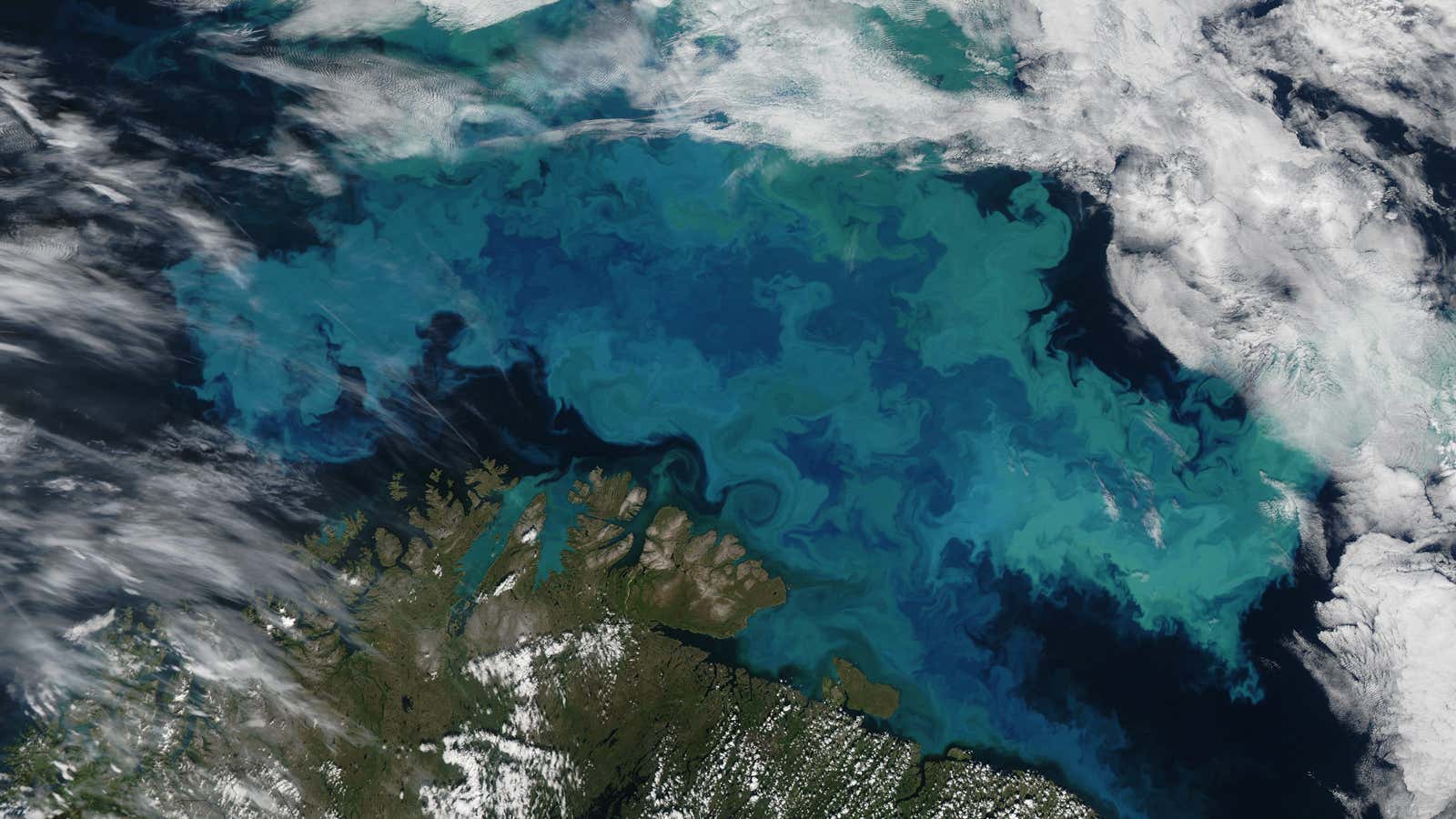The warming planet is changing the distribution of phytoplankton across the world’s oceans. Even though these microscopic creatures are too tiny to see with the naked eye, the overall effect will be apparent.
Changes in water temperatures are literally altering the color of the oceans. That’s according to a new study published this week in the journal Nature Communications by a team of researchers at the Massachusetts Institute of Technology. The scientists developed a model that, using images collected by satellites, can simulate how the growth and interaction of phytoplankton will change as sea temperatures rise around the world.
In subtropical regions, warm waters will get even warmer, driving out phytoplankton populations and most marine life, in general. In those areas, the water will appear more blue than it already does. Meanwhile, in waters closer to the poles, the warming will make the water appear more green as rising temperatures encourage more diverse populations of phytoplankton to proliferate. And when rays of sun hit those microscopic organisms, the light reflected back is green.
The ocean’s color is determined by how sunlight interacts with the things in the water that it hits. Water molecules on their own are able to absorb most of the light spectrum of sunlight, with the exception of the blue part—which is why mostly-barren swaths of the open ocean look blue in satellite images taken from space. But when there are phytoplankton in the water, they absorb and reflect back different wavelengths of light, hence the green coloring in certain areas of the oceans.
The model developed by this team of researchers is the first of its kind, because it’s based on reflected light measurements. The model enables scientists to predict how phytoplankton populations will change in the future, depending on temperature. Previous models looked at estimates of chlorophyll—which is contained in the phytoplankton—in the water, which can vary depending on ocean currents and isn’t a particularly good indicator of differences impacted by the changing climate.
“You can see a significant, climate-related shift in some of these wavebands, in the signal being sent out to the satellites,” one of the researchers said in a statement. “So that’s where we should be looking in satellite measurements, for a real signal of change.”
The simulations found that there will be a noticeable difference in the color of about 50% of the planet’s ocean surface area by the end of the 21st century.
